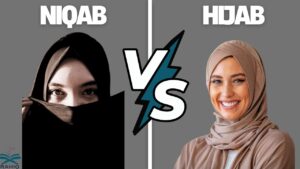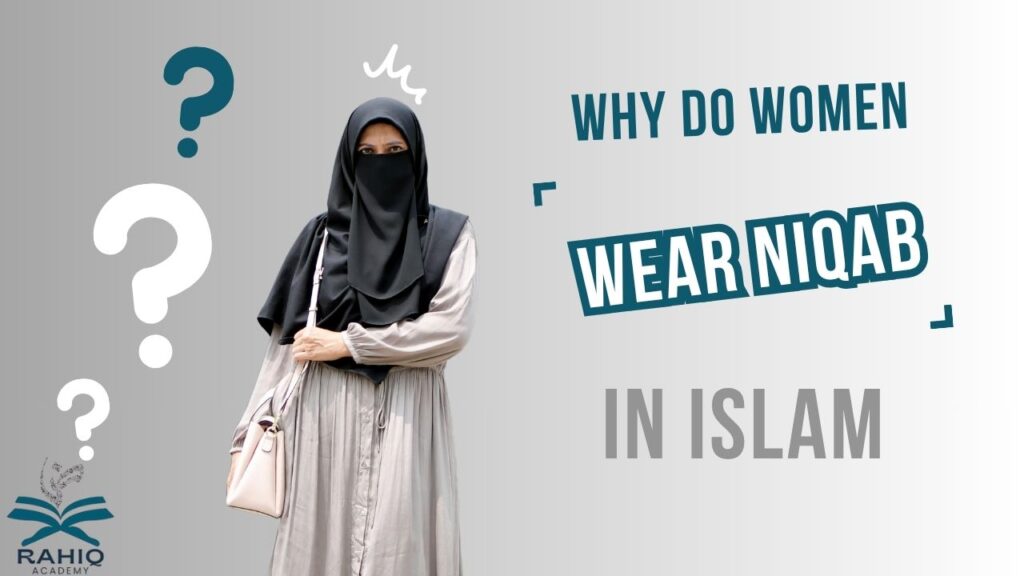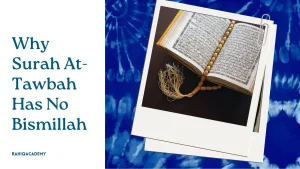why do women wear niqab in Islam is more than a cultural topic; it’s a personal act of faith and modesty. In the first six months of 2025, Pew Research Center reported that over 40% of Muslim women see modest dress as a spiritual choice, not social pressure (pewresearch.org). So, what drives women to choose the niqab over the hijab? This guide explores their beliefs, devotion, and personal expression.
what is A niqab and Why Do Women Wear Niqab in Islam?
- The niqab is a face covering worn by some Muslim women.
- It covers the face and leaves the eyes visible.
- It is different from the hijab, which covers the hair and neck but not the face.
Many people ask, why do women wear niqab in Islam? The answer lies in faith, modesty, and personal freedom. For many women, the niqab is not just a cloth. It represents privacy, belief, and self-respect.
The Meaning of the Niqab
- The niqab is a symbol of modesty and dignity.
- Some women wear it after learning more about Islam.
- Others follow cultural traditions that encourage modest dress.
- Still, each woman’s reason is personal.
- For some, it brings peace and focus.
- For others, it strengthens their faith and confidence.
Therefore, understanding why do women wear niqab in Islam helps clear misconceptions and build respect.
When and How Women Wear It
- Women often wear the niqab with an abaya or jilbab.
- These garments keep the outfit modest and comfortable.
- In some regions, it is a common daily wear.
- In others, it appears mainly during prayer or travel.
- The niqab can be black or colored, plain or decorated.
Its style may change, but its purpose remains constant: faith, privacy, and respect.
Different Views in Islam
- Scholars have various opinions.
- Some consider the niqab optional.
- Others see it as a recommended act of modesty.
- This range of views shows Islam’s flexibility and respect for personal choice.
- Each woman decides based on knowledge and conviction.
That is why why do women wear niqab in Islam is a question with many valid answers.
Common Misunderstandings
Many assume the niqab restricts women. However, for those who wear it, the experience is often the opposite. It gives them control. offers peace. creates space for dignity and freedom.
Across the world, women who wear a niqab send one clear message: I wear it because I choose to.
Common Types of Islamic Coverings
| Garment | Area Covered | Distinctive Features | Purpose |
| Hijab | Hair and neck | Leaves the face open | Modesty and identity |
| Niqab | Face, eyes visible | Worn with hijab or khimar | Privacy and respect |
| Khimar | Head, neck, shoulders | Long cape-like veil | Extended modesty |
| Burqa | Full face and body | Mesh screen over eyes | Full coverage |
| Chador | Whole body cloak | Face visible, held closed by hand | Cultural modesty |
Cultural and Regional Differences
- The style of the niqab varies across regions.
- In the Gulf, most niqabs are black.
- In other areas, like parts of Africa or South Asia, lighter fabrics are more common.
- Despite the color or design, the meaning stays consistent: modesty, privacy, and belief.
What Scholars Say About the Niqab
- Islamic scholars hold different views.
- Some consider the niqab optional.
- Others see it as highly recommended.
- A minority views it as an obligation.
- This variety gives women the space to choose.
- It also allows for different practices across regions.
Religious and Cultural Background
- The niqab’s roots trace back centuries, long before Islam.
- Face coverings existed in Byzantine, Persian, and Arabian societies.
- In Islam, it became one form of applying the Qur’anic concept of hijab, which refers to modesty in dress and behavior.
- Islamic scholars hold different views about the niqab.
- Some see it as recommended, others consider it optional.
- Few believe it is obligatory.
This variety shows the flexibility of Islamic teachings, allowing women to choose based on conviction and understanding.
Why the Niqab Still Matters
- The niqab connects faith and identity.
- It allows women to live by their values while expressing independence.
- It reduces judgment based on appearance and promotes self-respect.
- When we understand why do women wear niqab in Islam, we see it as a personal, thoughtful decision, not pressure or restriction.
- Every woman’s choice deserves respect and understanding.

Difference Between Hijab and Niqab in Islam: What Every Reader Should Know
- Many people wonder about the difference between a hijab and a niqab. It’s a common question. In short, one covers the hair, while the other also covers the face. Both are personal choices for modesty in Islam, but they serve different purposes.
- You’ll often see the hijab in countries across South Asia, the Middle East, and North Africa. It’s a versatile headscarf that Muslim women wear as part of their daily lives. On the other hand, the niqab is more common in the Arabian Peninsula, like in Saudi Arabia and Yemen, and is chosen for a different level of privacy and devotion.
- The decision to wear either is deeply personal. For many women, it’s a meaningful act of faith. As one niqab-wearer shared, it can be a simple, everyday way to feel closer to God, similar to how we do kind things for loved ones we care about. Another woman described it as a “physical manifestation” of her effort to become a better person, a constant reminder of how she wants to act and who she aspires to be.
Hijab — Everyday Modesty
- Covers the hair, neck, and sometimes the shoulders.
- Leaves the face open and visible.
- Worn daily by millions of Muslim women across the world.
- Symbolizes modesty, dignity, and faith.
- Comes in many fabrics, styles, and colors that fit cultural preferences.
- Scholars agree that hijab is a required form of modesty in Islam.
- Helps women express their faith while remaining active in society.
Niqab — Deeper Privacy and Faith
- Covers the face, leaving only the eyes visible.
- Always worn with a hijab or khimar underneath.
- Chosen by women seeking extra privacy and spiritual focus.
- Common in Gulf and conservative regions, yet found worldwide.
- For many, it’s not pressure but choice, an act of personal devotion.
- Scholars differ in views: some say it’s optional, others recommend it.
- Reflects a woman’s inner conviction to live with modesty and peace.
Why Do Women Wear Niqab in Islam
- To strengthen their connection with God.
- Protect privacy and avoid unwanted attention.
- To follow family or cultural traditions.
- To focus on inner values instead of appearance.
- Each woman’s reason is personal, rooted in faith and understanding.
Here is a quick comparison to highlight the core differences:
Hijab vs Niqab
| Feature | Hijab | Niqab |
| What’s Covered | Hair, neck, and sometimes shoulders | The face (leaving only the eyes visible) |
| Face Visibility | Completely clear | Covered |
| Common Use | Every day, modesty and religious identity | Enhanced privacy and personal devotion |
| Scholarly Views | Widely agreed upon as a core part of modest dress | Varies; seen as recommended or optional, but not mandatory by the majority |
The hijab and niqab both express modesty and self-respect in Islam.
Hijab represents visible faith and daily modesty. Niqab shows deeper privacy and spiritual reflection.
Understanding the difference between hijab and niqab in Islam helps remove stereotypes and build respect.
When people ask why do women wear niqab in Islam, the answer is simple: it’s a personal choice guided by belief, not by force.
Is Niqab Compulsory in Islam? Clear Guide on Faith and Choice
Many people ask, Is niqab compulsory in Islam? The answer is not one rule for all. It depends on scholarly interpretation, personal conviction, and cultural context.
I will explain each view simply, showing why do women wear niqab in Islam and how modesty is expressed differently.
What Niqab Means in Islam
- The niqab is a face veil that leaves the eyes visible.
- It symbolizes privacy, faith, and respect.
- Many women wear it to feel spiritually closer to Allah.
- However, whether it is required or optional is a long-standing debate among Islamic scholars.
Scholarly Views on the Niqab
Majority View
- Most scholars from the Hanafi, Maliki, and Shafi’i schools say the niqab is recommended, not obligatory.
- They believe the face and hands are not part of the awrah (parts that must be covered).
Minority View
- Some scholars, mainly from the Hanbali school, see the face as part of awrah, so they view the niqab as mandatory.
Contemporary View
- Many modern scholars describe the niqab as a personal act of devotion rather than a requirement.
Practical Reality
- Women often choose the niqab voluntarily as a sign of modesty, inner peace, or cultural belonging.
Scholarly Opinions on Niqab
| View | Scholar Group | Ruling | Common Regions | Reason |
| Majority | Hanafi, Maliki, Shafi’i | Recommended | Global | Encourages modesty, not required |
| Minority | Hanbali, some Salafi | Obligatory | Gulf countries | See face as part of awrah |
| Modern | Contemporary scholars | Optional | Worldwide | Personal faith and cultural choice |
So, is niqab compulsory? Most Islamic scholars agree it is not mandatory, but deeply respected.
The niqab remains a personal, voluntary choice, an expression of faith and modesty that varies by culture and belief.
Understanding why do women wear niqab in Islam helps promote respect and unity instead of judgment.
Summary
Understanding why do women wear niqab in Islam opens the door to deeper faith and respect for personal choice. Each act of modesty reflects devotion and peace within. To strengthen your Islamic knowledge and grow spiritually, visit rahiqacademy.com a trusted source that helps you learn Quran, Hadith, and Islamic values with clarity and care. Begin your journey today toward a more mindful and faithful life.
FAQ’s
Q:Is niqab compulsory in Islam?
A:Most scholars agree it is not compulsory. They see it as recommended or optional, depending on interpretation and culture.
Q:Why do women wear niqab in Islam?
A:Many women wear the niqab to express faith, modesty, and privacy. For most, it’s a personal and voluntary choice.
Q:What is the difference between hijab and niqab?
A:The hijab covers the hair and neck but leaves the face visible. The niqab covers the face, leaving only the eyes open.
Q:Do all Muslim women wear the niqab?
Q:No. Not all Muslim women wear the niqab. It’s a personal decision based on belief, comfort, and cultural tradition.
Q:What do Islamic scholars say about wearing a niqab?
A:Hanafi, Maliki, and Shafi’i scholars say it’s recommended. Hanbali scholars consider it obligatory. Modern scholars view it as a personal choice.
Q:When do Muslim women start wearing the niqab?
A:There is no fixed age. Some begin after studying religion, while others choose it later in life when they feel ready.
Q:What does the niqab symbolize in Islam?
A:It symbolizes modesty, privacy, and faith. It shifts attention from outer appearance to inner character.
Q:Is wearing the niqab a cultural or religious act?
A:It is both. Some women wear it as part of Islamic modesty, while others follow cultural or family traditions.
Q:Does the niqab limit a woman’s freedom?
A:No. Many women say it gives them control and peace. It allows them to decide what to share and live by their values.
Q:Can women remove the niqab if they want to?
A:Yes. The niqab is a personal choice. Women can decide when and where to wear or remove it.
Q:Where is the niqab most common?
A:It is most common in Gulf countries but is also worn in Africa, South Asia, and other Muslim-majority regions by personal choice.




